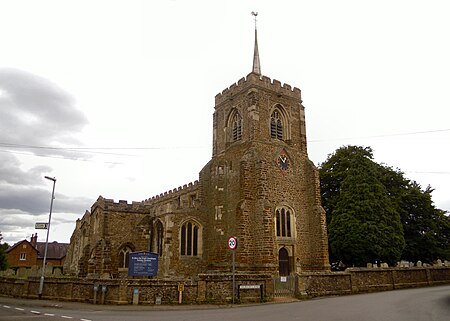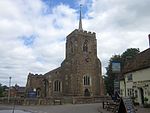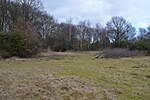Church of St Mary the Virgin, Gamlingay
13th-century church buildings in EnglandChurch of England church buildings in CambridgeshireGrade I listed churches in CambridgeshireUse British English from February 2023

The Church of St Mary the Virgin is the parish church for the village of Gamlingay in Cambridgeshire and is dedicated to St Mary the Virgin. Gamlingay is part of the ecclesiastical parish of Gamlingay with Hatley St George and East Hatley. The church is mainly 13th-century with extensive rebuilding in the 14th and 15th centuries. It has been a Grade I listed building since 1967 and comes under the St Neots Deanery in the Diocese of Ely. Nikolaus Pevsner in 1954 described the church as "... the most impressive church in this part of the county."
Excerpt from the Wikipedia article Church of St Mary the Virgin, Gamlingay (License: CC BY-SA 3.0, Authors, Images).Church of St Mary the Virgin, Gamlingay
Church Street, South Cambridgeshire
Geographical coordinates (GPS) Address External links Nearby Places Show on map
Geographical coordinates (GPS)
| Latitude | Longitude |
|---|---|
| N 52.154965 ° | E -0.187194 ° |
Address
St Mary the Virgin
Church Street
SG19 3ET South Cambridgeshire
England, United Kingdom
Open on Google Maps










